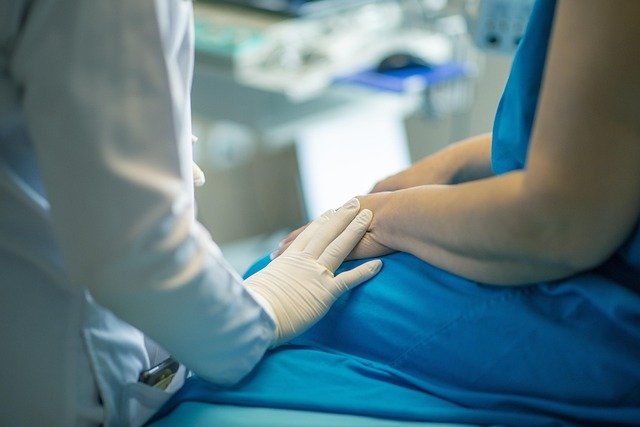Liposuction Essentials: A Guide to Body Contouring
Liposuction is a popular cosmetic surgery that targets and removes stubborn fat pockets to refine your silhouette. This guide explains which areas can be treated, the benefits and risks, how to prepare, what recovery looks like, and typical costs—helping you decide if liposuction and body contouring are right for you.

Liposuction remains one of the most common surgical options for people looking to refine their shape and remove localized fat deposits that resist diet and exercise. While it is not a substitute for weight loss, this procedure can sculpt specific areas to create a more balanced, proportionate appearance. Below is an overview of who it helps, what to expect, and practical considerations for those thinking about liposuction.
Areas commonly treated with liposuction
Liposuction is highly adaptable and can be used on numerous parts of the body where excess fat tends to collect. Typical treatment zones include:
- Abdomen and waist — to slim the midsection and enhance the waistline.
- Thighs and hips — for reducing inner or outer thigh fullness and improving leg contours.
- Buttocks and “love handles” — to smooth the transition between the waist and hips.
- Arms and upper back — to address stubborn fat that causes a bulky appearance.
- Chin and neck — to reduce a double chin and sharpen the jawline.
- Chest — commonly used in men to treat gynecomastia (excess male breast tissue).
Surgeons can often address several regions during the same operation, allowing for coordinated, comprehensive contouring results.
Benefits and potential complications
The main advantages of liposuction are its ability to remove fat from targeted spots and improve overall body proportions. Many patients report a boost in self-confidence and satisfaction with their silhouette after healing. When paired with a stable weight and healthy lifestyle, the results can last for years.
However, liposuction is a surgical procedure and comes with potential risks that should be discussed thoroughly with a board-certified plastic surgeon. Possible complications include:
- Infection or bleeding
- Uneven contours or visible asymmetry
- Fluid pockets (seromas) beneath the skin
- Temporary or permanent changes in skin sensation
- Risks related to anesthesia
Choosing an experienced surgeon and following all pre- and post-operative instructions helps reduce these risks. Patients should have realistic expectations and understand that skin elasticity and overall health influence outcomes.
How to prepare for surgery
Proper preparation improves safety and the likelihood of achieving the desired result. Steps patients commonly take include:
- Complete a medical evaluation and disclose all medications, supplements, and health conditions.
- Stop smoking several weeks before surgery, as smoking impairs healing and raises complication risk.
- Avoid medications and supplements that increase bleeding risk, such as certain anti-inflammatories and herbal remedies, as directed by the surgeon.
- Aim for a stable weight and balanced diet in the weeks leading up to the procedure.
- Arrange transportation home and plan for help during the first few days of recovery.
Surgeons will provide a personalized pre-operative checklist that should be followed closely.
What to expect during recovery
Recovery varies by patient and the extent of the procedure, but most people can anticipate the following:
- Swelling and bruising are common for several weeks; compression garments help reduce swelling and support healing.
- Many patients take 1–2 weeks off work, depending on how physically demanding their job is.
- Light activities can usually resume within days, while more strenuous exercise is generally delayed for 4–6 weeks.
- Final contours continue to refine over months as residual swelling resolves.
Regular follow-up appointments allow the surgeon to monitor healing and address any concerns quickly.
Costs and factors that influence pricing
Liposuction prices vary widely based on multiple factors. These commonly include geographic location, the surgeon’s credentials and experience, the number and size of areas treated, the specific technique used, and facility and anesthesia fees.
| Body Area | Average Cost Range |
|---|---|
| Abdomen | $3,000 - $7,500 |
| Thighs | $2,500 - $6,000 |
| Arms | $2,000 - $5,500 |
| Chin/Neck | $2,500 - $5,000 |
| Multiple Areas | $6,000 - $15,000+ |
Prices are estimates based on available data and can change. Independent research and consultations with qualified providers are recommended before making financial decisions.
Making an informed choice
Because liposuction is usually considered elective cosmetic surgery, it is rarely covered by insurance. Many practices offer financing plans to spread costs. When evaluating options, prioritize board certification, before-and-after photos, patient reviews, and an in-person consultation where candidacy, expected results, and possible complications are discussed.
Liposuction can be an effective way to address localized fat and improve body proportions, but long-term satisfaction depends on realistic goals and maintaining results through diet and exercise. A thoughtful consultation with an experienced plastic surgeon will help determine whether liposuction is the appropriate step for your aesthetic objectives.
This article is for informational purposes only and should not be considered medical advice. Please consult a qualified healthcare professional for personalized guidance and treatment.






